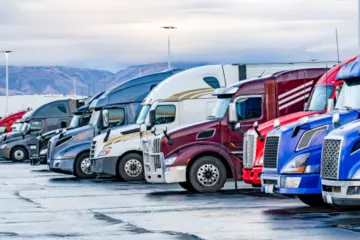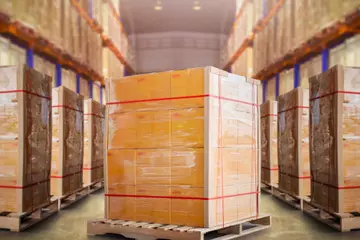What goes into a full truckload rate?
Whether you’re new to shipping full truckload or curious about current charges, knowing what goes into your rate can help you understand the true price of shipping your loads. See what factors influence FTL prices and learn how to start rate negotiations with your truckload provider.

Supply and demand is the name of the game
Like LTL charges, full truckload rates have several factors that go into them. Most of these factors are influenced by the principle of supply and demand. In a marketplace, the more there is of something, the less expensive it may be. This relates directly to sourcing capacity for your loads, which greatly affects price.
Here are four considerations that help a truckload provider determine your load’s rate:
Lane
The lane you’re shipping in is the most important information for finding a truckload rate. While mileage may seem to be the overriding factor, the origin and destination of your load is more important than pure distance.
For example, the lane may seem desirable if your load is going to a destination where a driver can find a backhaul. This desirability means more drivers will want to haul your load, making the rate less expensive. The same goes for origin — if your load needs to be picked up where there is little freight, this will be reflected in the rate due to the lack of drivers already in the origin area.
Equipment type
Another piece of the truckload price puzzle is the type of equipment that you need to haul your load. Whether shipping with a dry van, flatbed or other specialized equipment, rates will differ for each type. The more specialized the equipment, the higher your rate will typically be. Demand for the equipment will play a role as well.
Market conditions
Some shipping lanes have seasonality changes that affect rates. Prices can fall and rise along the same lane, depending on the time of year and the current truckload marketplace. For example, shipping in or out of produce-producing regions, like Georgia or Florida, can increase rates. This will also depend on whether produce is shipped in or out of that area.
Rates can also be affected by regional challenges such as weather. If snowstorms are likely in your lane during your time of shipment, you may see a rise in your rate.
Accessorial charges
Another factor you will want to keep in mind is accessorial charges. Does your load need excess bars and straps? Do you need a liftgate service? Indoor final mile delivery? These are all accessorial charges that your logistics partner may build into your rate.
Remember that rates can be negotiated
Because you, as the customer, are paying for a service, you can sometimes negotiate with your transportation partner. These negotiations will depend on whether you have contract rates in place or are working off the spot market.
With contract pricing, your prices are set in place after negotiations and submitting an RFP and will remain the same for the balance of the determined lifespan of your pricing. Spot rates fluctuate most but may suit your wants or needs. Talking this through with your trusted partner can help you make the best decision.
Better understand contract rates vs. spot rates
Navigate the market with an expert
With a better understanding of the basis of full truckload rates, it still may seem like the marketplace is complex. Working with a trusted transportation expert can simplify the process. Connect with an ArcBest full truckload specialist who can help you determine the best solution and get your loads rolling.







